As an Amazon Associate, I earn from qualifying purchases. In addition, I participate in several other affiliate programs that allow me to earn while I recommend products I love.
There’s just something about a puffy cookie that many people love.
Instead of a flat, hard cookie, you might want to learn how to make cookies more puffy so you can learn what adds to that puffiness and how to get more of it.
It’s important to read the directions carefully because especially as you are learning, baking is a science and less of an art than cooking.
It relies on specific amounts of ingredients and their interactions, and there are a lot of things you can do to make puffier cookies like chilling the dough beforehand, not overmixing, increasing the amount of flour and rolling the dough into cylinders instead of spheres.
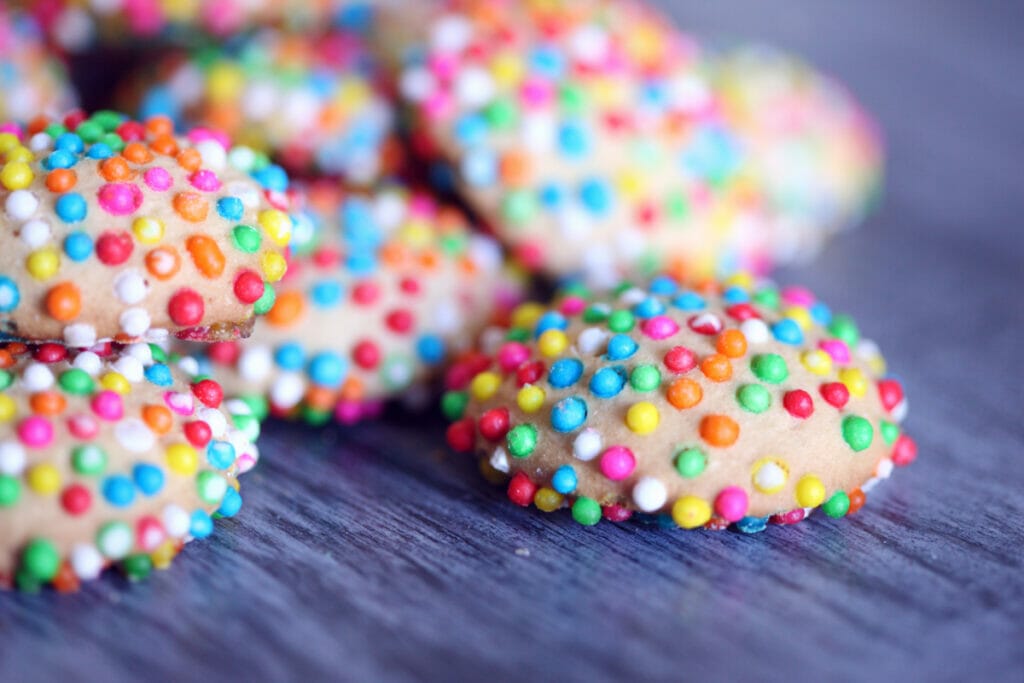
This can also help you if you’re trying to do the opposite and make a flat, chewier cookie, as you can learn what to avoid.
Our Favorite Quirky Kitchen Gadgets
- Select-A-Spice Auto-Measure Carousel – Get your exact spice amount without measuring spoons with this spice carousel. Simply twist the dial for a perfect 1/4 teaspoon measurement!
- Silicone Utensil Rest with Drip Pad – This utensil rest keeps my countertops neat & drip-free!
- Snap N Strain Pot Strainer and Pasta Strainer – I love this strainer because it fits on all pots and pans while also being compact and easy to use!
- Herb Scissors Set – I use these scissors to cut and mince fresh herbs directly into any dish without the tedious work of cutting each herb or dirtying up a cutting board.
- Knife Sharpener – I love how quirky and nifty this rhino shaped knife sharpener is. It definitely puts the FUN in functional!
1. Don’t use a greased baking sheet
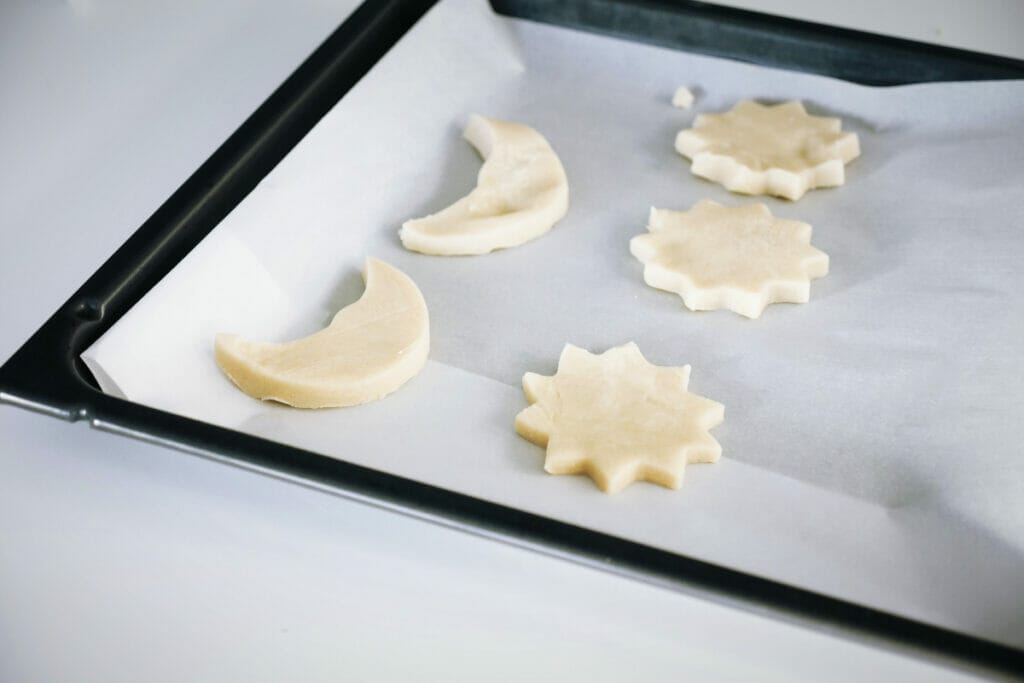
Greased baking sheets are an absolutely no-no when it comes to making puffy cookies.
They’re going to encourage your cookies to spread (literally by being so greased that the dough just slides faster across the baking sheet as it bakes).
Cookies that spread too much are flat cookies!
So definitely don’t grease the baking sheet, and preferably use something like baking paper on it (this also helps slow the spread) or even better, a silicone baking mat.
Silicone baking mats like these ones are seriously one of the best investments you can make into your baking because they are incredibly easy to constantly reuse and can also prevent the bottoms of your cookies from burning.
2. Use shortening instead of butter
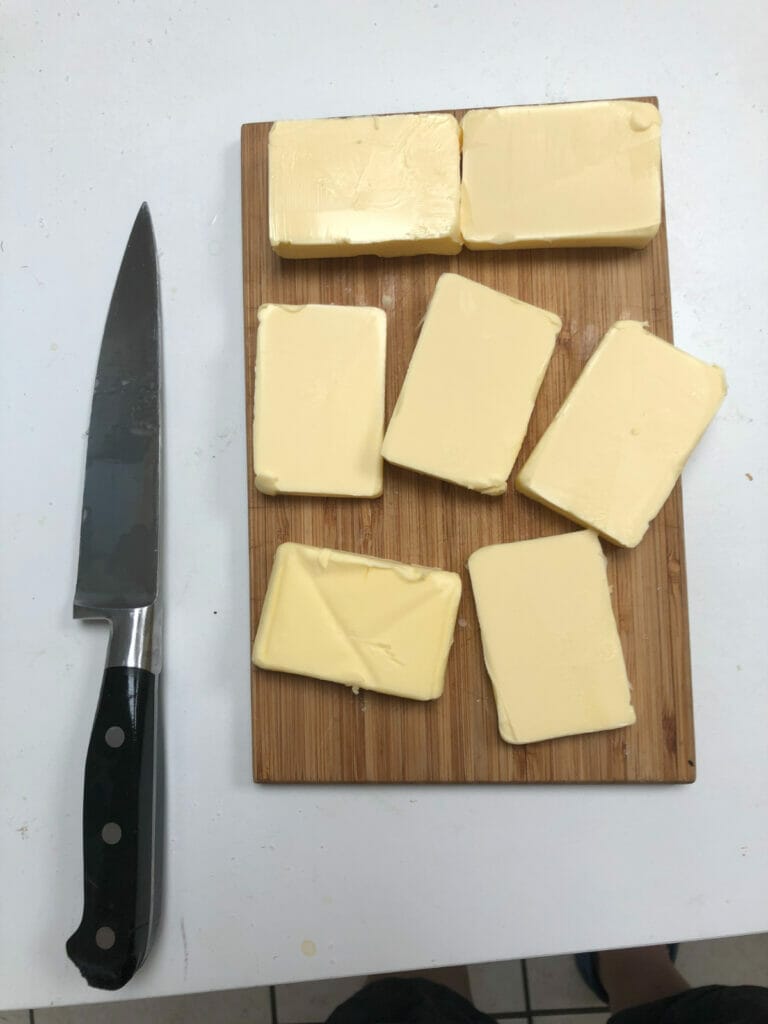
Here’s a top tip that many don’t know about: using shortening instead of butter is going to produce a cakier, puffier cookie.
If you only use shortening instead of butter, you may end up with too much puffiness and it will end up too cakey, but if you use a ratio of 1/2 shortening and 1/2 butter in your recipe, you should end up with cookies that have the puffiness, without losing the flavor or chewiness that butter helps with.
It’s a winning combo, and one you should definitely try if you want puffier cookies.
3. Avoid using melted butter
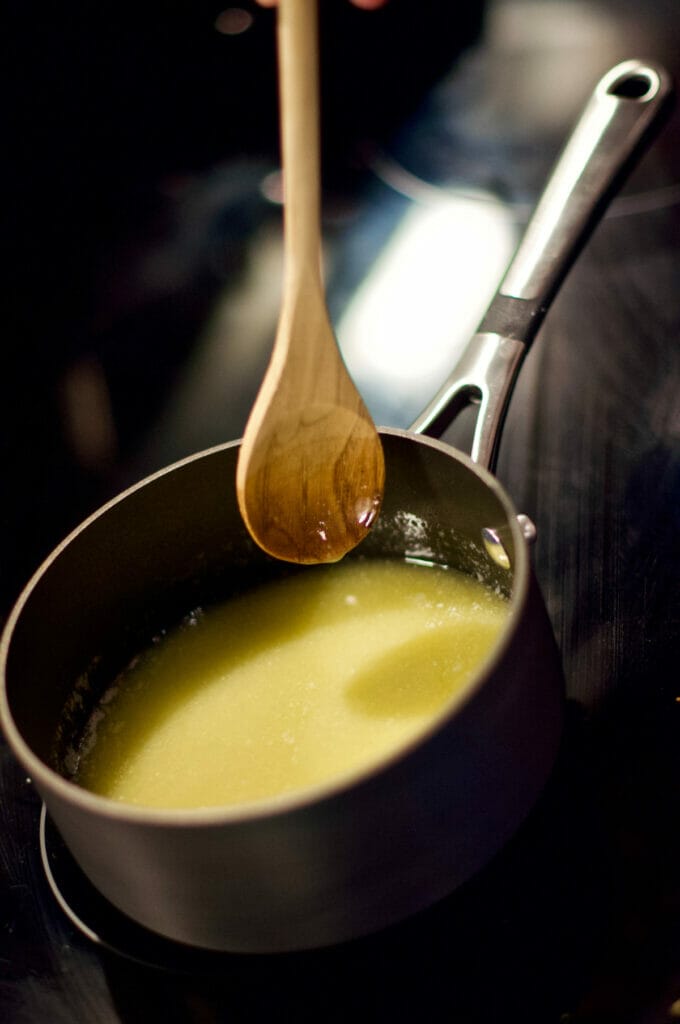
If you want puffy cookies, never use melted butter.
Never.
Why?
Using melted butter means you will usually end up with chewier, flat cookies because the butter is already melted and not helping your cookie hold its puffiness when baking.
Instead, use cold butter, as that means the butter will take longer to melt in the oven and leave you with a puffier cookie.
4. Swap out baking powder for baking soda
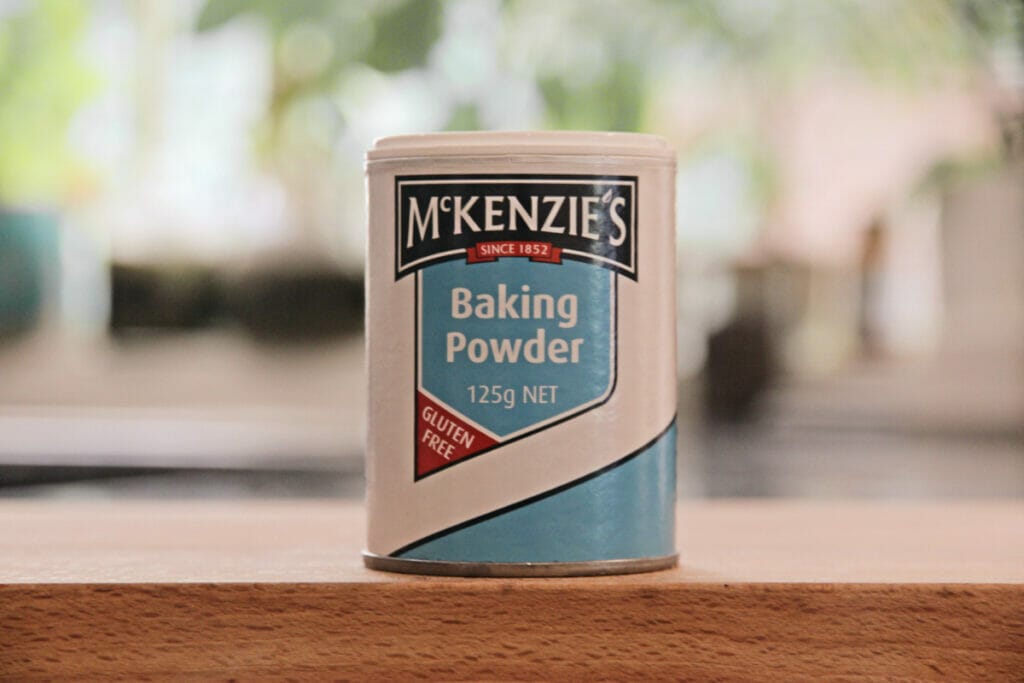
If your recipe calls for baking soda, you can try using some baking powder instead to get more of that puff instead of the spread.
Both are leaveners, but baking powder often creates a fluffier cookie than baking soda, which often produces a chewier cookie.
Try decreasing the amount of baking soda and increasing the amount of baking powder by about 1/2 a teaspoon for best results.
5. Keep the dough chilled
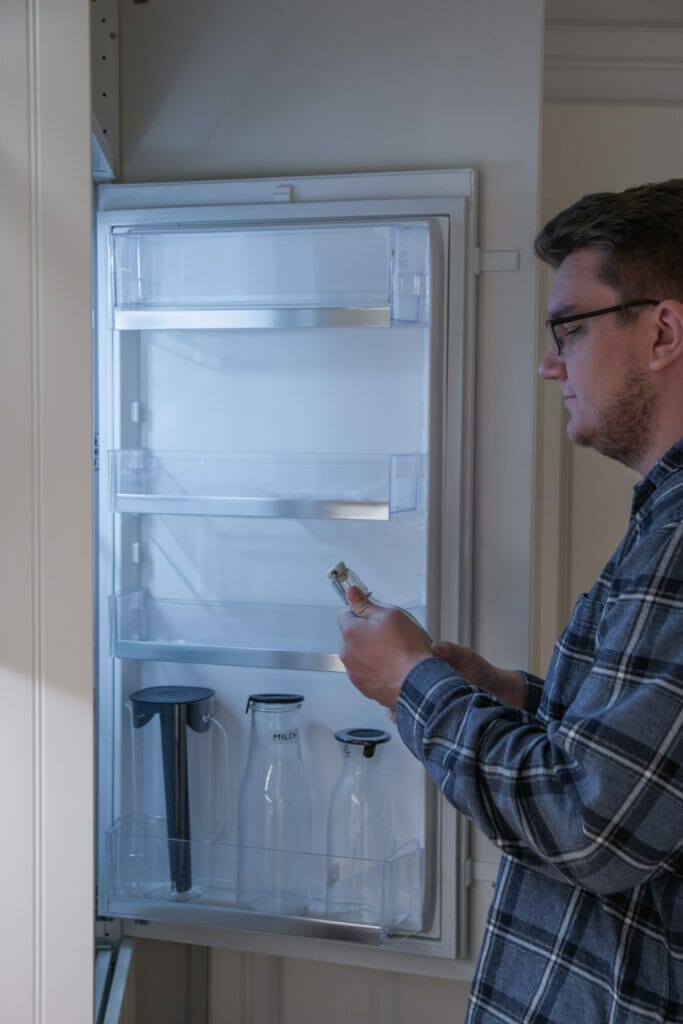
One of the keys to puffier cookies is chilled dough.
Chilled dough just doesn’t spread as easily in the oven, which as we learned above, is one of the best ways to keep your cookies puffy.
A lot of people want to skip the “chilling the dough” part because it’s boring and you just want your cookies now, but it seriously helps.
If you only have 30 minutes or an hour, then chill them for that long, but if you want optimum results, leave the dough chilling overnight and make them the next morning.
Room temperature dough is going to spread more easily than chilled dough, mostly because of the butter within the dough, so chill, chill, chill!
6. Instead of flour, use oat bran
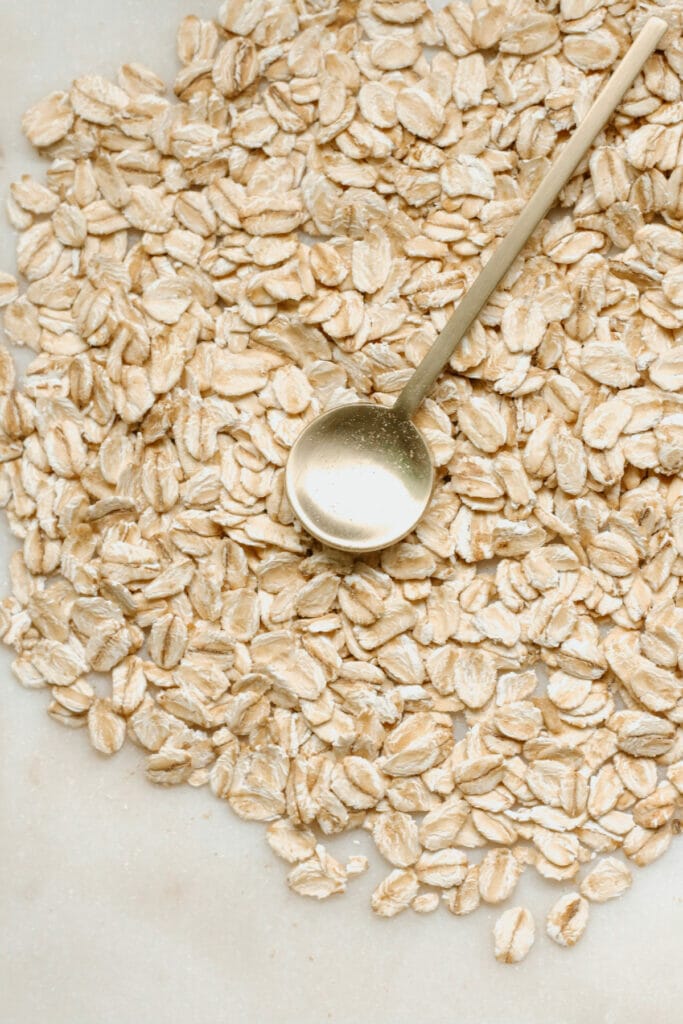
You can also think about some ingredient substitutions when it comes to getting the right texture of cookie for you.
Some people suggest that you use oat bran instead of some of the flour in your recipe.
Oat bran will help your cookie hold its structure better than flour, and if you don’t use too much, it shouldn’t taste like oats at all.
Try this by using 1/2 the amount of flour your recipe calls for and substituting the other half with oat bran, and see how you like it.
7. Check the expiration date of your baking powder and soda
Not getting that rise in your cookies to help them go puffy?
Some of your ingredients could just be expired.
Baking soda and baking powder easily lose their potency after their expiration dates.
Double check when they go off to make sure you haven’t hit that date yet, as if you have, it’s probably one of the main reasons why your cookies aren’t puffy.
Get yourself a new, fresh jar of baking soda or baking powder and enjoy the instant fix.
8. Use cream cheese, pudding mix, or cake mix
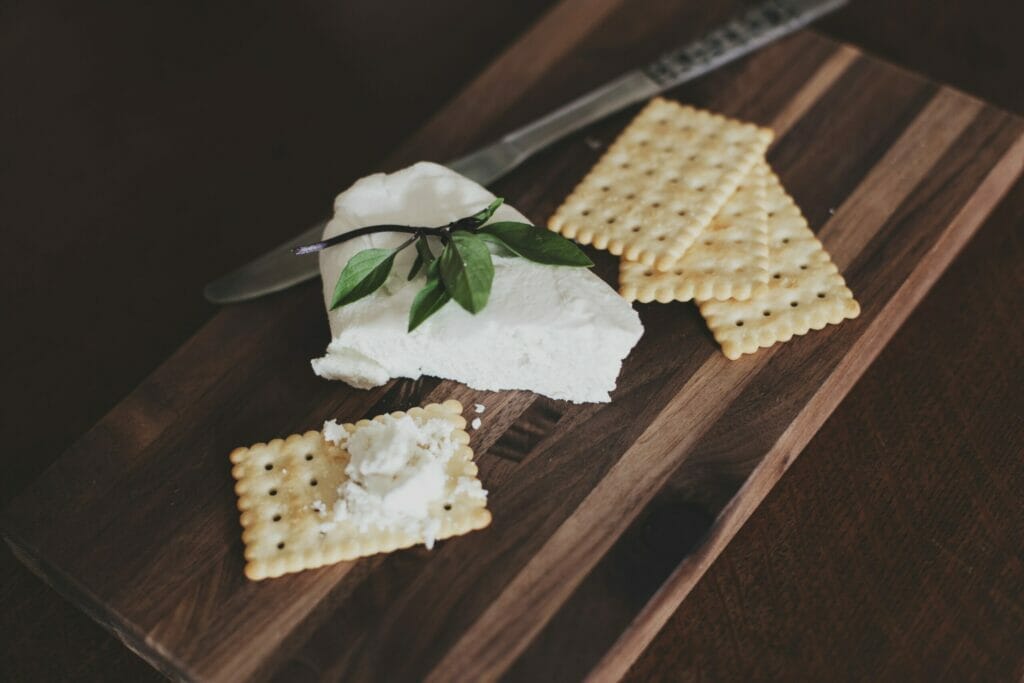
By adding moistness to the dough, ingredients like cream cheese and pudding mix (seriously) can help you get a puffier, cakier cookie.
Some bakers swear by simply adding in a dry packet of instant pudding mix (choose the flavor based on what will go with your cookie recipe) for awesome results.
9. Mix-in an extra egg yolk
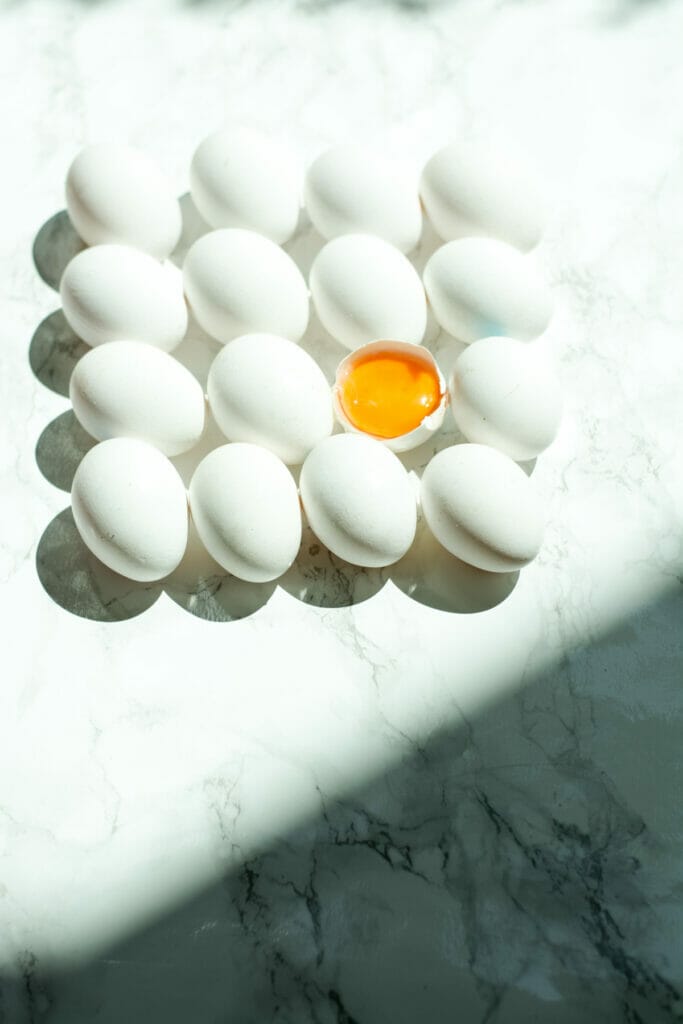
Some ingredients help give our cookies puffiness by reactions (baking soda and baking powder) and other tips are more to help stop the cookie from spreading, but adding an extra egg yolk is one of those substitutions that will help with the actual structure of your cookies.
Think about it like this: cakes require far more eggs than cookies, and are super puffy!
You don’t want to add a whole egg (as it may give you too much moisture), but if you add an extra egg yolk, you should get cakier, puffier, cookies.
10. Use more flour
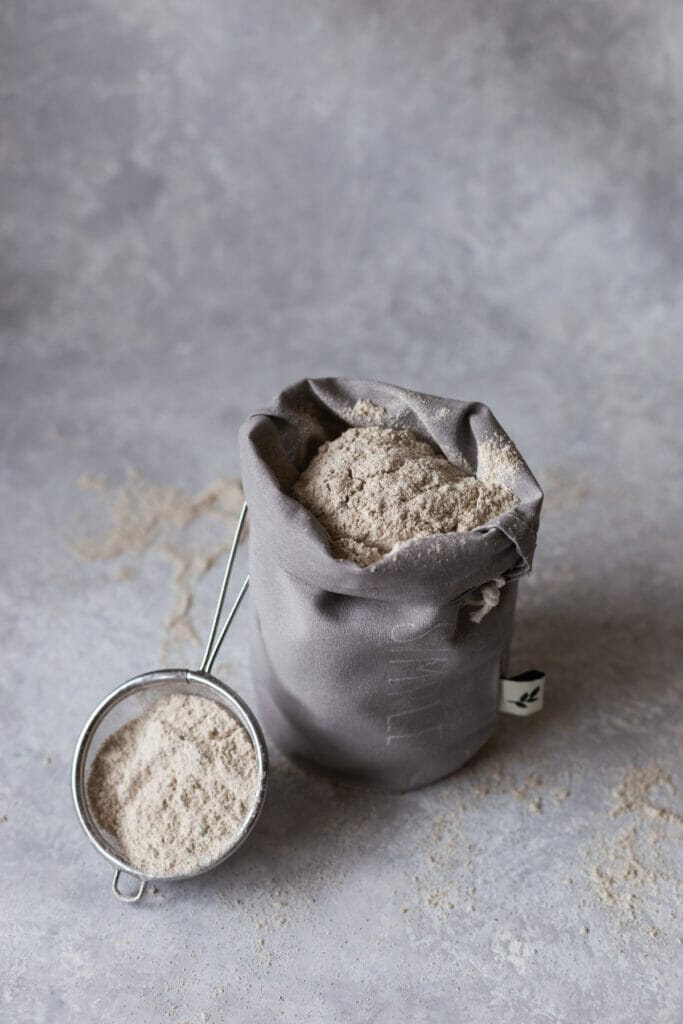
We can manipulate the flour in our cookie recipe a little bit to try and get puffier cookies.
The first thing to try is increasing the amount of flour, which will help prevent the cookies from losing their structure as much when baking, but you want to be careful of this so you don’t end up with incredibly dry and flour-tasting cookies.
Instead, add about 1/4 cup and see how it goes. You can always add more in future batches.
Another flour hack to make puffy cookies is to swap out your all-purpose flour for cake flour.
Cake flour will give you a more tender cookie, which tends to be puffier instead of flat and chewy.
11. Avoid overmixing the dough
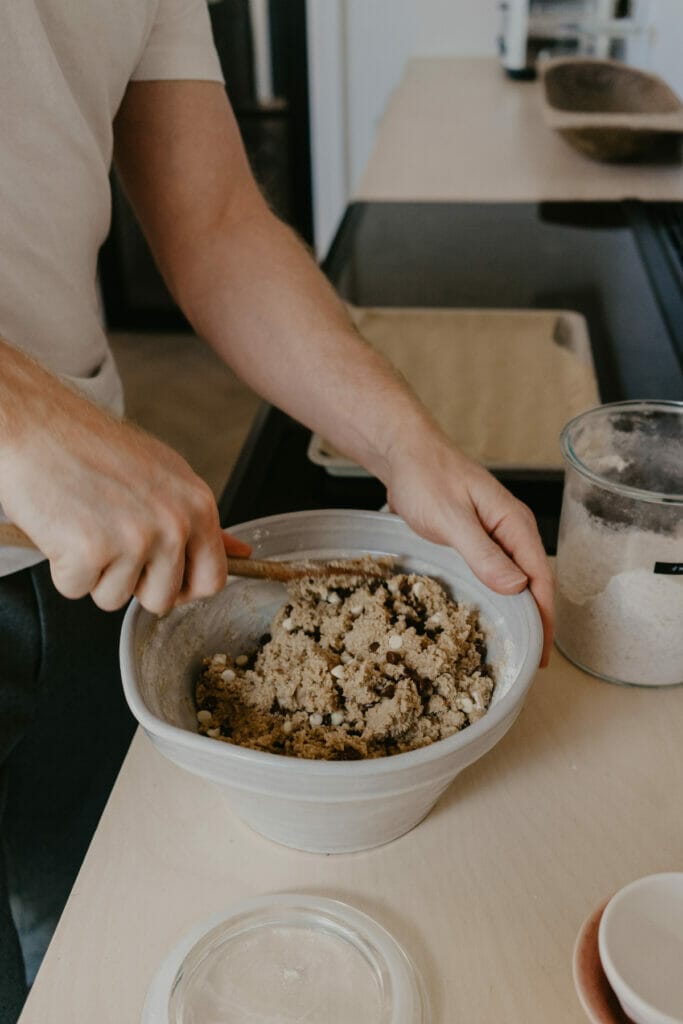
Overmixing your cookie dough is a no-no for many reasons, but it can also lead to flatter cookies.
This is because you’ll add too much air into the dough, and while that might seem like your cookies are going to be puffier because of extra air, that air is going to fall flat in the oven very quickly (rising up first and then quickly sinking in).
You should only ever be mixing your ingredients until just combined in many recipes.
So after the butter and sugar are creamed together, mix those wet ingredients in until it appears to be one dough rather than separate ingredients and stop.
You can also try folding ingredients in rather than mixing vigorously, which helps in the case of adding the wet and dry ingredients together as well.
Just gently mix and stop before you go too far for a puffier cookie.
12. Make cylinders with your dough ball
Seriously, it works.
Everyone always says to create spheres of dough to put on your baking tray, but you should actually shape your cookie dough into more of a cylinder instead of a ball or sphere.
Place them so they are sort of like standing cylinders (not laying down like logs), and then it will take longer for them to sink in when baking so you’ll end up with a puffier cookie.
Genius!
13. Cool your baking sheet

Similar to greasing, a warm baking sheet is going to help your cookies spread fast because it will melt the butter way faster than if you bake on a room temperature cookie sheet.
If you want to go the extra mile though and really end up with puffy cookies, try chilling the baking sheet in the fridge before you bake!
Or, alternately, just make sure that you have actually given your cookie sheet time to cool when just out of the oven before putting another batch in.
This could be something you need to be aware of if you typically make multiple batches.
People will wonder why their first batch turned out great, and subsequent ones failed, and that’s usually the reason.
Hey! Want more expert cookie baking hacks? Check these out!
- Exactly how long homemade cookies last
- Can you bake cookies on aluminum foil?
- 7 easy ways to soften hard cookies
- Oops! Burned cookies! Here are 9 ways to fix them
- Help! My cookie dough is crumbly!
- Why are my cookies burnt on the bottom?
- How long does cookie dough last?
- Tips on Making Your Cookies Chewier
- How to avoid cakey cookies
- Exactly how to freeze cookie dough
- How long should you chill cookie dough?
- Tips on Making your Cookies Super Moist
- What to do if you put too much butter in your cookie dough
- How to bake frozen cookie dough
- Expert cookie storage tips
- Using salted or unsalted butter in cookies
- Help! How to make cookies without butter
- Help! How to make cookies without vanilla extract
- How to make cookies without brown sugar
- Can you use cake flour in cookies?
- Help! I have no eggs for my cookies!
- Can you make cookies without baking soda?
- Can you make cookies without bread flour?
- How to make cookies without baking powder
- How to fix wet and sticky cookie dough
